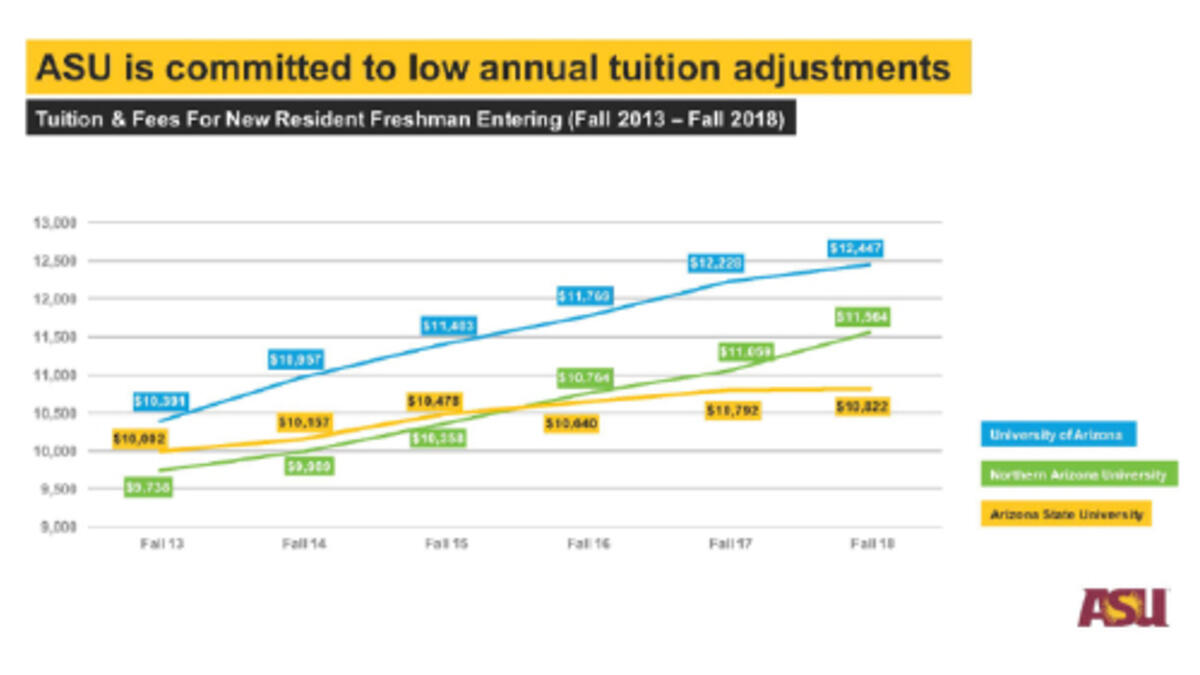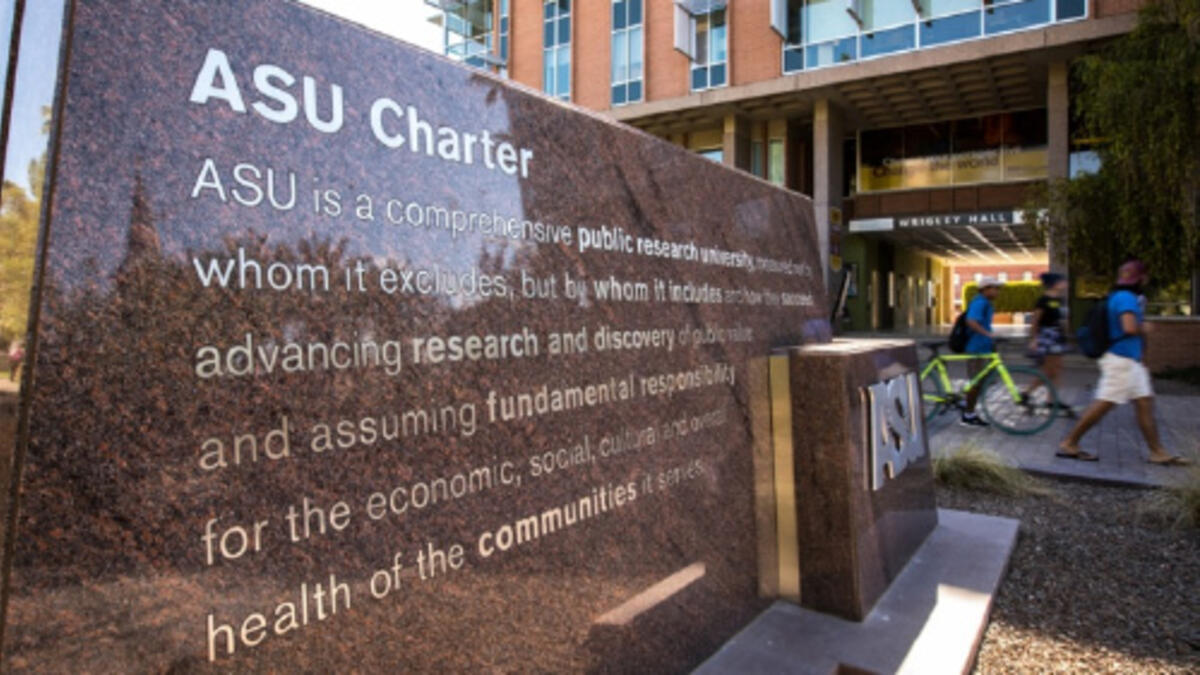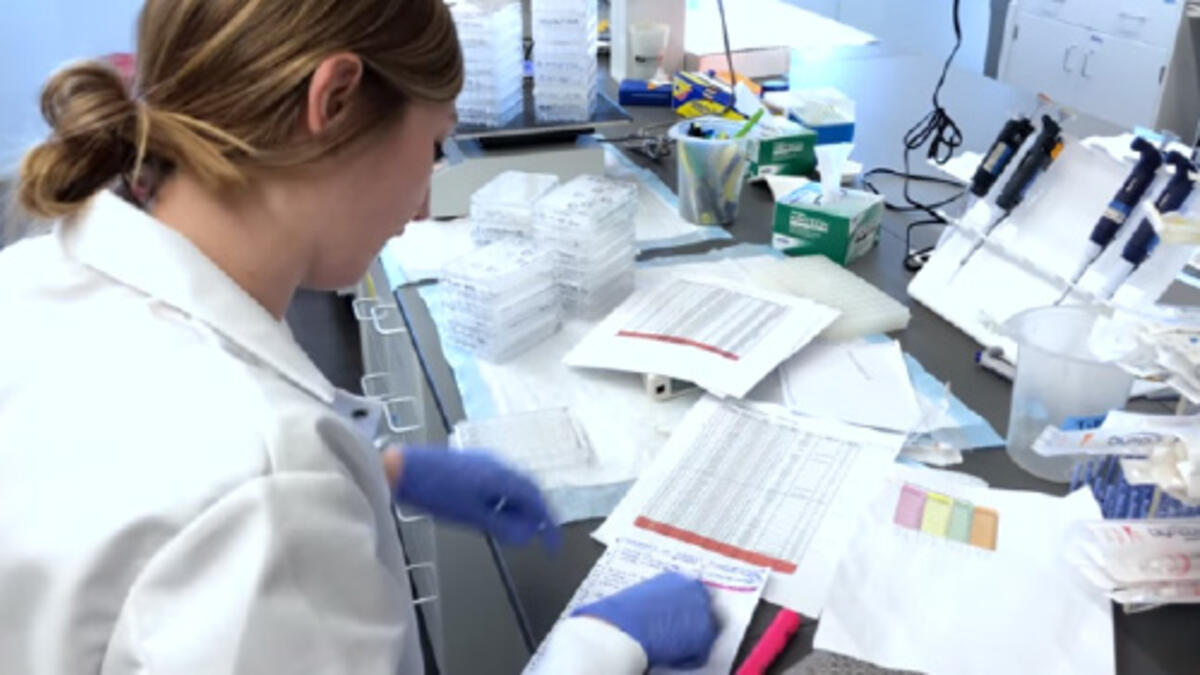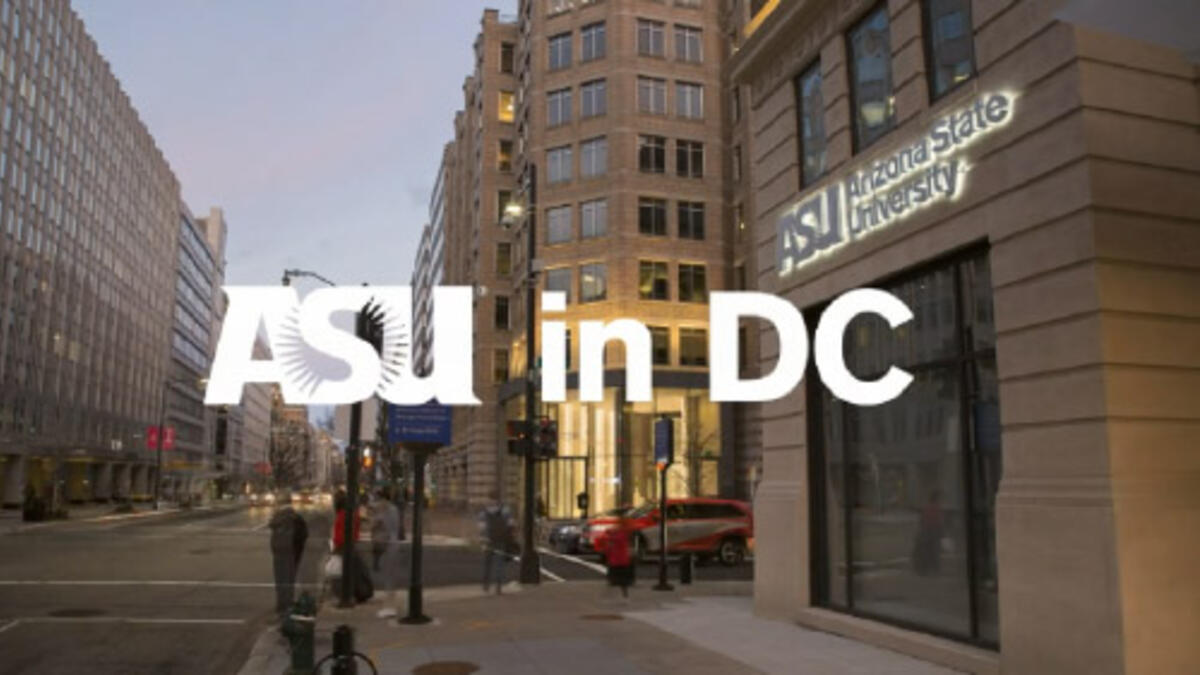
Updates from the President
Updates from President Crow: April 16, 2019
- ABOR approves extended tuition pledge and simplified fee structure
- A new view of the ASU charter and why it matters
- $50M Edson gift and new Barrow initiative aim for new health answers
- A busy first year for the Barrett and O’Connor Washington Center

ASU’s new proposed tuition and fee structure extends our 10-year tuition guarantee and collapses student fees into simpler categories for greater predictability. (Image Credit: ASU Office of the President)
ABOR approves 2019-2020 tuition adjustment and simplified fee structure
Last week, the Arizona Board of Regents approved ASU’s 2019-2020 tuition and fee proposal, which includes my renewed commitment to keep future tuition adjustments for Arizona undergraduate students to no more than 3% annually, and as close to zero as possible for another 10 years. For the coming academic year, ASU tuition for resident undergraduates will increase by an average of 2.8%.
In addition, our new structure eliminates more than 6,000 individual course and program fees for ASU undergraduate students and creates a streamlined system, part of our ongoing institutional efforts to be responsive to our students and their families, and to be more efficient. We recognize that it will take our university community some time to adjust to this new process, but we are at the ready to assist during this transition.
While our tuition model is different from other Arizona universities, it is designed to provide our learners with a high quality education at a moderate cost. ASU’s tuition and fee guarantee has ensured that our costs for resident students are the lowest of Arizona’s three state universities. And we remain nationally recognized for offering comprehensively excellent academics at an affordable cost with meaningful ROI. With this model, we will continue to add value to the degrees earned here far into the future.

The success of new and future graduates is at the heart of our official university charter. (Image Credit: ASU Enterprise Marketing)
A new view of the ASU charter and why it matters
This fall marks the fifth anniversary of Arizona State University’s official charter, a concise expression of our institutional commitment to access, student success, discovery and social embeddedness. Its words define our objectives, the reasons for every decision and action we undertake and our vision for what a 21st-century public university should be. It covers a lot of ground in just 46 words.
Why does the charter matter? Because it is a steadfast reminder of our significant responsibility to be of meaningful service to our students, our communities and humanity at large. It also conveys the scale of our aspirations and the perseverance and ongoing creativity needed to meet our increasing metrics. It is no small pledge, and one that we must continue to explain and demonstrate to broad audiences.
ASU has made important progress over the years, but disconnects about our excellence, access and impact linger. The charter is not rhetoric, but a pledge to seek, create and employ every available solution to advance the lives we touch – whether on campus, next door or around the world – to thrive and better our world. I invite you to watch the message below, share it with others and join our journey.

The historic Edson gift will help ASU researchers and learners to expand our understanding and treatment of dementia. (Image Credit: ASU)
$50M Edson gift and new Barrow initiative aim for new health answers
In support of ASU’s commitment to tackling the world’s most complex problems, Charlene and J. Orin Edson, dedicated friends and benefactors of ASU, recently made a $50 million gift to the Biodesign Institute at ASU and the newly named Edson College of Nursing and Health Innovation. Their generosity will help to advance ASU’s leading-edge research on dementia and related nursing education. The transformational gift will be divided evenly between the Biodesign Institute and the Edson College, and will fund multidisciplinary research along with establishing a new center dedicated to much-needed new treatments and skilled caregivers.
Also, I recently had the pleasure of joining Dr. Michael Lawton, president and CEO of the Barrow Neurological Institute, at Celebrity Fight Night to announce the Barrow-ASU Initiative for Innovation in Neuro-Engineering. This partnership endeavor will connect experts from our respective institutions with the purpose of advancing significant innovations in research, treatment and technology to improve brain and spinal cord function. Building off of our cooperation on the ASU-Banner Neurodegenerative Disease Research Center , our new initiative seeks to spearhead new knowledge in neuroscience and advance related innovations that will produce better outcomes and quality of life for patients.
These two announcements demonstrate the confidence and bold collaborative spirit that our partners invest in ASU, and we are grateful for their commitment. Through relationships like these, ASU is empowered to address society’s biggest challenges and to cement our position as a dedicated health leader.

The Ambassador Barbara Barrett and Justice Sandra Day O’Connor Washington Center at ASU has been a busy place since its opening one year ago. (Image Credit: Deanna Dent, ASU Now)
A busy first year for the Barrett and O’Connor Washington Center
The Ambassador Barbara Barrett and Justice Sandra Day O’Connor Washington Center has passed the year-one mark, and it has been a busy one indeed. The center was established in Washington, D.C. to provide unique learning opportunities for students, amplify ASU knowledge in national and international dialogues and facilitate constructive idea exchanges on all important issues. Since its grand opening, the center has settled in as a home to the McCain Institute for International Leadership and a range of ASU academic programs, news bureaus and think tanks.
In addition to offering learning, teaching and research prospects for students and faculty, ASU’s presence in D.C. has introduced their work to new audiences and allowed engagement in conversations that would not otherwise be possible. Through that exposure, collaborations with thought-leaders, higher education institutions, federal agencies, national associations and non-profits, among others, have been forged. As a venue for meetings and special events, individuals who previously were unfamiliar with ASU have had a chance to learn about our distinctive knowledge enterprise and work with us in new ways.
I invite you to watch this video summary of the center’s first year and learn more about ASU’s work in D.C.
- McCain Institute: In the Arena podcast – Michael Crow
- Fueling Arizona’s economy – economic impact of Arizona’s public universities
- The Atlantic: One way to stop college-admissions insanity: Admit more students
- The Arizona We Want Progress Meters
- Cheryl Heller joins ASU as director of design integration